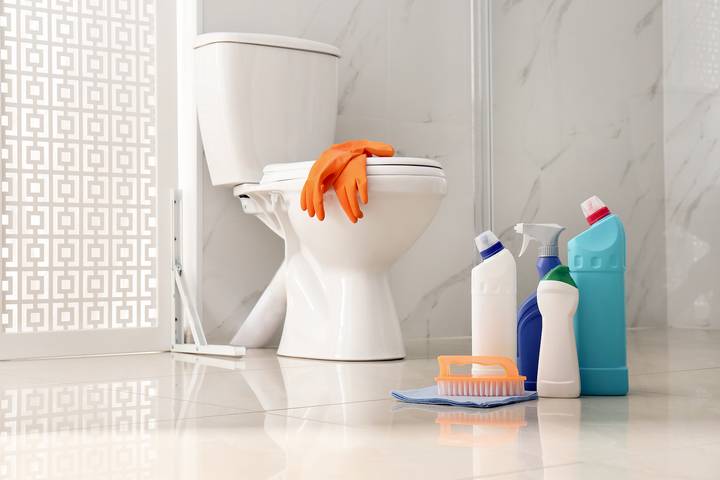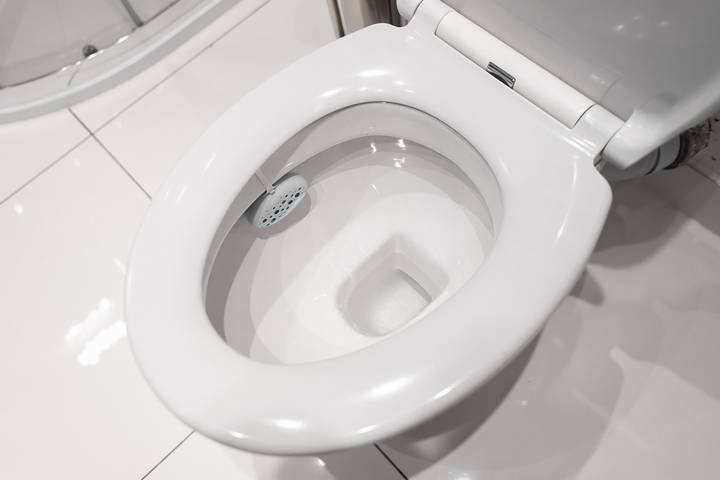How to Tell If Your Toilet Is Leaking Underneath

A toilet may be leaking without your knowledge. Detecting toilet leaks is difficult because they occur discreetly, so you often don’t notice the problem. A tiny leak can go overlooked for many months before you realize it is happening. As the issue persists daily, your utility bills will increase significantly. If you are paying more for water in your house, there’s a chance your toilet might be leaking.
Even if there are symptoms of water wastage, you must prove your suspicions first. Although the toilet may be the culprit, it’s possible the leaks originate from the pipes or elsewhere in your home. How do you know if your toilet is leaking? A toilet leak occurs from various causes, primarily because of broken parts. You may find signs of water leakage after examining the toilet bowl or tank. Otherwise, contact a plumber for a professional inspection.
Let’s learn about how to tell if your toilet is leaking underneath the tiles:
1. Toilet making noise after flush
It’s normal to hear the sound of water during each flush. However, do you experience continuous flushing noises even when the toilet is out of use? Listen carefully for a while. If the toilet keeps running after a flush, it’s highly unusual. The sound of running water may indicate the toilet water is leaking into the bowl.
The solution may be as simple as jiggling the handle. If that stops the issue, it could be an issue with a flapper valve. Otherwise, the problem may be the chain connecting the flush handle to the flapper valve. A quick look inside the toilet tank will give you the necessary information.
2. Water on floor around toilet bowl
You may have water around the rim of your toilet on the floor. This symptom signifies a likely leak somewhere in the porcelain. It can also indicate a loose connection between where the tank meets the toilet. Check the connecting bolts and carefully tighten them. If you are uncomfortable about doing this, a professional plumber can certainly help.
3. Brown stain around toilet base
Have you noticed a stubborn stain at the base of your toilet? Maybe you’ve scrubbed rigorously and keep observing the same brown or yellow ring. Simple cleaning won’t solve this problem. You possibly have a leak around the toilet bowl that leaves a stain behind.
The darker the ring colour, the older the leak. Stain colours like this come from water damage on the toilet base. If the water leaks on the floor instead of through the drain, you’ll see streaks of old rings around the base. You should fix this problem immediately to prevent long-lasting property damage.
4. Toilet smells like sewer
Sewers have their unique odour from accumulating waste. The pipes in your drains collect through the sewage system. There’s no reason for your home to carry this foul stench. If you notice this reeking smell, check for leakages in your plumbing. When the toilet bowl leaks, the dirty water from waste could collect on the floor, leaving an unpleasant odour.
Sometimes, this smell can come from leaking pipes rather than raw sewage in your house. Either way, contact a plumber immediately after perceiving the sewage odour. Gases from leaking pipes like methane can harm you and your family.
5. Toilet tank water level is too high
The overflow pipe keeps excess water from flooding and spilling onto the floor. With this tube, toilets retain the required water level for a successful flush. Open the lid on the toilet tank and inspect the water level. When the water flows past the tube, there is a likely leak. Flush the toilet and lift the rod to see if the water keeps flowing. If it stops, consider replacing the rod and float.
6. Toilet flapper leaking
The flapper is what creates a seal at the bottom of the toilet tank. It determines how much water flows into the bowl when you flush. As with anything, a flapper can wear out and cause a leak. A broken flapper limits the flow and causes the water to leak from the tank to the bowl.
Turn off the water supply and inspect the water level in the tank. A decreased water level after 15 to 20 minutes means the flapper isn’t functioning. The water will leak continuously into the bowl since the flapper has weak retention power.
Fortunately, a broken toilet flapper is straightforward to replace. Turn off the water supply to the toilet, typically located at the base of the hose with a handle. Flush the toilet and drain it. After removing the old flapper, replace it with an identical size and model. A plumber can assist with this installation process.
7. Shut off water to toilet overnight
Another way to test a toilet leak is to shut it off overnight. You do this by cutting off the water supply. Do this before bedtime and ensure no one uses the toilet during sleep hours. When you wake up in the morning, check the water level in the tank. You may discover minimal water left at the bottom of the tank. If so, it’s undeniable that you have a leaking toilet.








